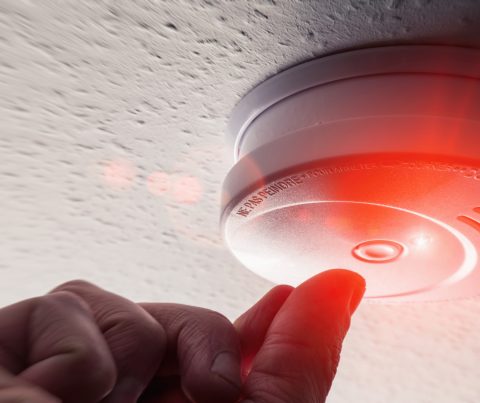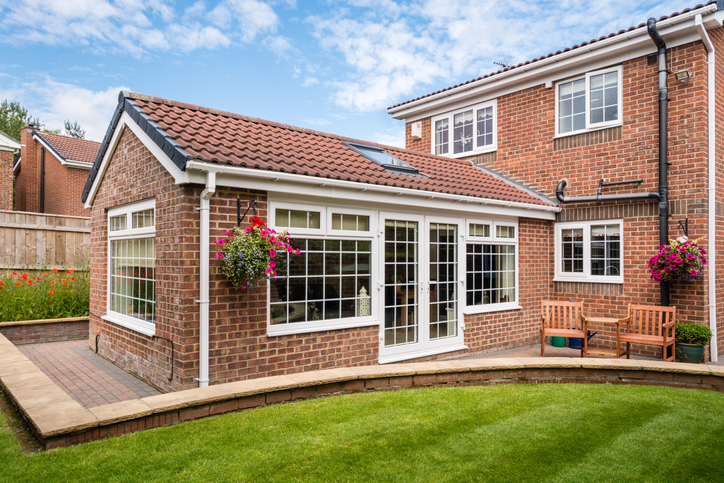Introduction: Aging in America
By 2030 every Baby Boomer will be over 65, and will make up 21 percent of the population. And by 2060, almost 25 percent of Americans will be 65 and older. The aging population will have many far-reaching implications for American society, and how to care for older citizens is one of the most important to plan for and consider now.
Until recently, senior citizens would typically go into an assisted living facility when they became too infirm to care for themselves or an aging partner. But there’s a growing trend for older Americans to stay in their homes throughout the aging process, known as “aging in place.”
There are various reasons for this trend: many people want to stay independent for as long as possible, remain near friends, and stay close to their community. As assisted living costs mount, it can also make financial sense to remain at home as long as possible to delay those costs and save for future health care needs. The Genworth Cost of Care Survey 2018 says that the national median cost for assisted living is $48,000 a year.
Not only does aging in place tend to cost less than assisted living, it’s more comfortable, maintains social networks, and has been proven to slow the advancement of memory loss.
What Is Aging in Place?
In the past, senior citizens would typically go into a nursing home or to an aging-friendly community for seniors when it became impossible to care for themselves. But nowadays, almost 90% of those people over age 65 want to stay in their homes as long as possible, according to an AARP survey.
Aging in place isn’t a new concept; after all, before nursing homes existed, the elderly would be looked after by family members or other caretakers at home. But the modern twist on this idea is that healthy senior citizens retrofit their own homes to accommodate their needs, and find a great caregiver to help with daily tasks while still living in their home.
Not only can aging in place on your own terms be a comfort, it can make a lot of sense from a financial standpoint, too. For many Americans, their home is their single biggest asset, and it can be used to leverage future health care costs through different types of loans such as reverse mortgages or home equity lines of credit.
How to Grow Older at Home
There are many important considerations when aging in place at home. For example, you need to make sure there are grab bars in bathroom showers, install security systems to call for a medical emergency, potentially hire housekeepers or nurses, and more.
If you want to stay in your home as long as possible in your older years, it’s important to have a strategy in place that will address your changing needs as you age. It’s essential to complete the renovations before they’re required. Waiting too long is the mistake most seniors make. Read on to get all the tips, tricks, and ideas you need for the ultimate guide to aging in place.
Home Renovations to Age in Place
While there are many things to consider when it comes to aging in place, nothing is more important than retrofitting your home to suit your future needs. What that means can vary widely, depending on your home’s layout and your personal needs and preferences. There are, however, a few common home renovations, adjustments, improvements, and modifications you should consider when thinking about home projects to increase accessibility, prevent falls, and assist your plans for aging in place:
- Replace doorknobs with door lever pulls
- Install rocker light switches, which are easier to use than toggle switches
- Switch your windows to awning-style openings
- Consider installing smart home technology, such as video doorbells, security systems and alarms, automated lighting, and thermostats, which can easily be monitored and controlled remotely via apps on a phone or tablet
- Install wainscotting or chair rails to help with standing and balance (ensure that they’re properly installed and can accommodate extra weight, though!)
- Install more direct and automated lighting to reduce glare and illuminate any trip hazards in the main pathways of your house
- Soft and smooth materials like cork, linoleum, vinyl, and rubber work best for flooring and are preferable to carpet, which can pose a trip hazard
- Install grab bars in bathrooms and place non-slip bath mats
- Consider raising electrical outlets so they’re easier to reach
- Install adjustable-height showerheads to make it easier to bathe, and walk-in tubs to avoid slip hazards.
- Use an app to remind you to take your medicine and use special pill boxes to set out your medications for an entire week
- Make sure your water heater is set to a safe temperature (120 degrees is recommended)
- Consider the installation of a stairlift, there are many benefits of a wheelchair stairlift or home elevator since these can increase the independence of a handicapped person.
- Add wheelchair ramps at the entrance of the house to make it safe and easy to navigate between the floor levels of your home.
Many of these projects can be done yourself over a weekend, or you could hire a handyman to do them for you. Some may require permits depending on your state and local laws. Visit your county web site and search for permits to learn more. Depending on the complexity of the project, some permits are issued immediately, while others may require formal architectural plans and an inspection before being issued.
And if you’re wondering how much your project might cost, there are free project cost guides online that can help you find out how much hundreds of different types of home projects typically cost in your area.
Take Advantage of Services to Simplify Money Management
A common point of frustration for aging seniors is the managing of their finances – specifically paying bills. Missing payments can result in the suspension of services such as gas, electric, cable, and phone service and can negatively affect credit scores. A simple way to ensure these issues don’t arise is to use a bill-paying service A good bill-paying service should offer excellent support at an affordable price.
Home alterations for the hard of hearing
Home Maintenance to Keep You and Your Home Safe
Not only do you need to consider renovations, you should also plan on going home maintenance as you grow older and may need more assistance in maintaining your home.
Before you do anything else, we recommend you perform a complete safety assessment, checking for things like slippery steps, loose stair railings, furniture obstructions, or area rugs where you could trip and fall.
Other ongoing maintenance you should consider for aging in place:
- Check and test smoke and carbon monoxide detectors at least once every six months or as recommended by the manufacturer
- Replace any burned-out light bulbs, inside and outside
- Clean up your yard to make sure there’s a clear path to the house and no loose branches or wet leaves pose trip hazards
Choose the Right Home Security System
One of the most important contributors to feeling safe in your home is having a reliable and trustworthy security system from a dependable company with relatively fast response times, such as ADT, SimpliSafe, or Vivint. Packages can vary in services and price, so it’s worth shopping around for the system that’s right for you.
Some things to look for:
- There are a lot of fancy options available with home security systems these days, but the most important part of any security system is knowing how to use it. A simple, effective, and affordable security system is the best bet for most seniors.
- Look for extras like personal alarms or panic buttons, and easy-to-use panels with big, illuminated buttons. Home automation systems with smart controls are also a great idea for seniors and people with disabilities and mobility limitations.
- Consider installing cameras in selected interior and exterior spaces that can be accessed remotely if family wants to check in on you — this is particularly useful for people who live alone.
As an added bonus, investing in a home security system will also likely lower your home insurance rates.
In-Home Services and Assistance
You may find that you need additional household help, this can help you maintain your independence while accepting help.
By establishing a network of community resources, such as home healthcare services and support groups, you can supplement your caregiving efforts and ensure a well-rounded approach to aging in place. You can also involve your children. They can help in creating a safe and accessible home environment by making necessary modifications and implementing technologies that promote independence and security. Accepting help protects you from feeling overwhelmed and missing out on care. Whether this is from your children or healthcare services, it is essential to have candid discussions about individual needs, preferences, and expectations to ensure a smooth journey.
If you can afford it, consider outsourcing some chores, such as:
- Hire a house cleaner
- Schedule regular yard maintenance
- Get your groceries and other necessities delivered
- If it’s available in your area, have some meals delivered and consider hiring a service for your laundry and/or dry cleaning
- Hire a trustworthy money manager who specializes in elderly clients. They can help with everything from managing investments to making sure that bills are paid on time. Of course, you will also need to schedule and manage medical and telehealth services, many of which can now be done online, like online speech therapy and virtual visits
Home Insurance for Aging in Place
Seniors should make sure they have adequate insurance for their homes. The majority of senior citizens are on fixed incomes, which means it’s important to plan for the worst and make sure your home is properly insured. Many home insurers give discounts to seniors, so it’s worth it to shop around for the best deals. Here are some options to look for:
- Deductible forgiveness: in the event that there’s a big loss on the property, the insurance company may waive the deductible for the homeowner.
- Lifetime renewability: this protects homeowners from insurance cancellation even if they file a claim against their insurance.
- Protection for full cost: your insurance company will replace your belongings no matter the condition and state with items of similar quality.
Is Aging in Place Right for You?
Aging in place isn’t right for everyone. But if you’re someone who’s relatively healthy, there are many tools to stay independent, and it can be a viable option for growing older on your own terms. With the right organization, planning, modifications, and equipment, you can rest assured knowing that you’ll be safe and secure in your home for years to come.




